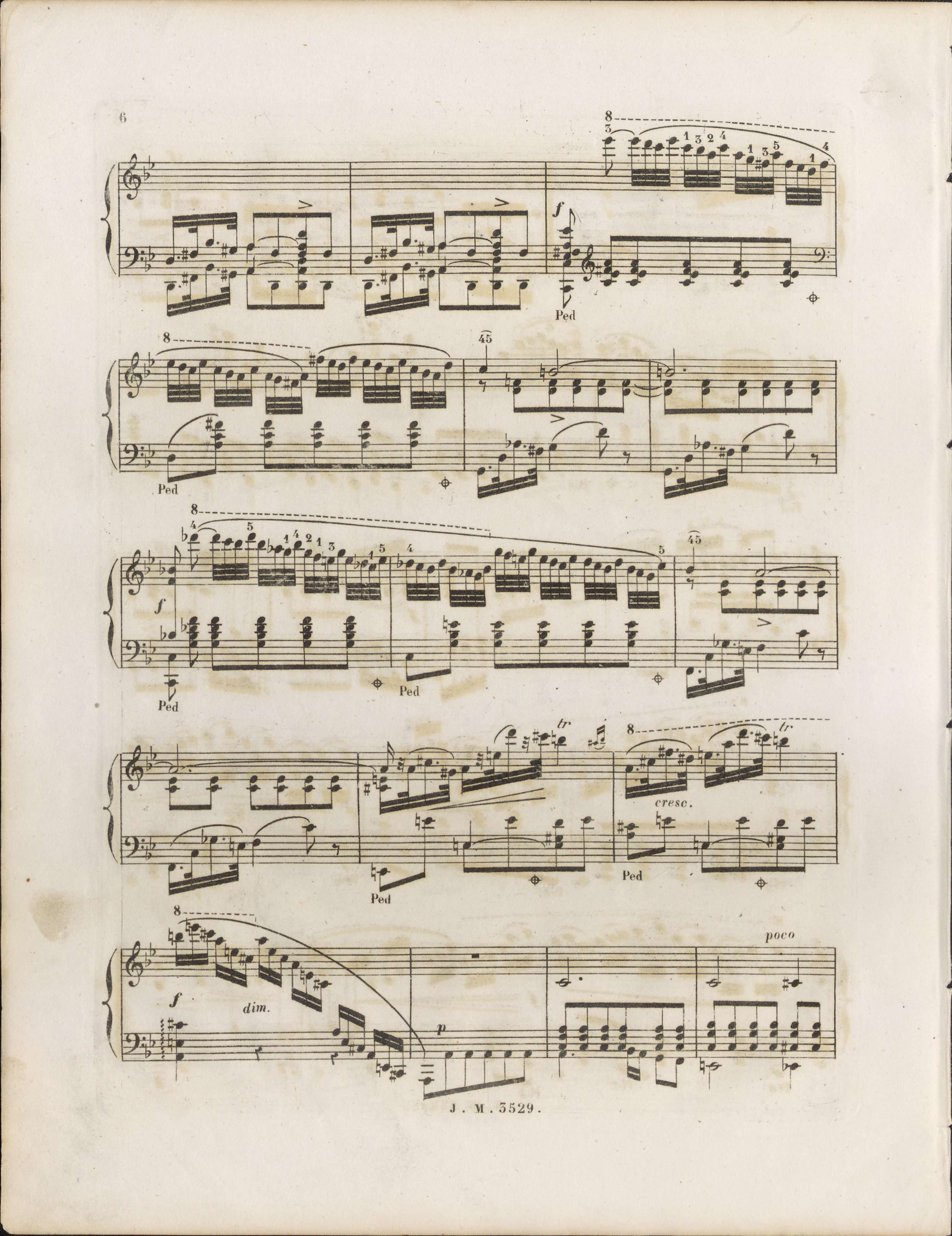



The rhythmic notation of the 2nd and 3rd beats of those bars cause substantial problems as in bars 52-53 and analog. The analysis of the notation of JC suggests that Chopin initially wrote only four quavers in each hand in [AI] and then, in a simplified manner, separated some of the notes by extending their stems over the beams (a similar notation is to be found in the finished autograph of the Polonaise in F minor, WN 12, bars 23-24). The notation of EF is an alternative attempt to decipher the notation of [AI]. For the main text we adopt the notation of PE with a clearly highlighted melodic voice.
Compare the passage in the sources »
category imprint: Graphic ambiguousness; Interpretations within context; Differences between sources
issues: Inaccuracies in JC
notation: Rhythm




